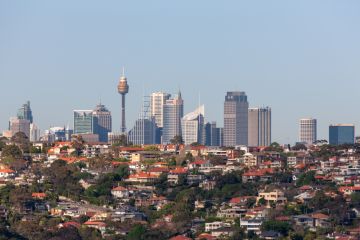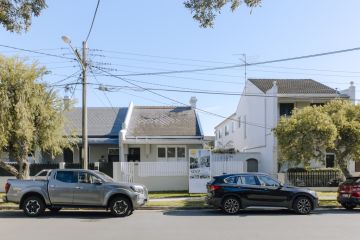Amsterdam turning weedy wasteland into funky and affordable neighbourhood
To stimulate a population shift to a new neighbourhood that currently appears as a weedy wasteland dotted with a few giant warehouses and the detritus of shipbuilding, Amsterdam’s municipal council has followed a proven formula of urban revitalisation.
In the nascent waterside residential district of NDSM, across the IJ river from the charming but well-off, unaffordable old canal city, the process of soft social engineering has proceeded as follows:
First they let the artists loose.
A few were already in situ in the NDSM company’s shipyard that had gone bust and having been vacated in the 1980s, was going to rust.
But in encouraging up to 200 creatives to take over the massive infrastructure as space for rent-free, self-built studios in 2007, the municipality had officially sanctioned an “Art City” that it chartered to be “a cultural breeding ground for 50 years”.
With free ferry services from Central Station to the outlying northern suburbs, or “Noord” of Amsterdam, young tourists who started coming over to check out what the arty folk were up to stimulated a regular market and dance party scene. Food venues became the next essential.
While their more permanent accommodation was being developed further along the NDSM Wharf, students could rent cheap erstwhile digs made of stacks of 250 colourful container conversions. The 10-minute ferry crossings got fuller with young bicycling commuters becoming habituated to living over in the boondocks.
With a carefully calibrated grunge and youth quotient thus established, cool companies then arrived to convert other shipyard shedding. Currently they include the world headquarters of Red Bull, Greenpeace and MTV, whose employees and visitors sometimes need on-site accommodation.
- Related: Why residents are still flocking to the CBD
- Related: How Melbourne can keep its liveability ranking
- Related: The new sign your suburb has made it
Botel, a converted ship, is moored at the ferry dock and has become an icon that offers three-star budget accommodation with buffet breakfast. Of late, and to the chagrin of the artists, “Mr Hilton” has also arrived with a more sophisticated Hilton Double Tree Hotel that is a low-key structure but does have art-themed rooms, gym and conference facilities and large print menus for greying hipsters.
Marcel Ellens, a jaded options trader who after turning 50 wanted to try something other than moving money around, arrived five months ago to set up the first bicycle hire business in the NDSM wharf area. He’s watching many 25-40 year olds and “couples with young kids” relocating to initially take up the old shipbuilder village houses behind the shipyard. “It’s getting quite trendy”, he says.
Lonneke Vaandriks has just started her wheeled coffee street stall, “Coffee on the Roll”, that she pedals over from where she lives in neighbouring Noord, “because I believe in the future here. There is a lot happening here.”
From the seed-bed of youthful hope and arty resourcefulness has grown such a stimulating, graffitied, hip-as atmosphere that the artists are beginning to cuss that property “gentrification” is actualising before their eyes.
They say their precious arts hub is becoming “prime real estate” and they’re urging a stronger bottom-up vision for the place that is not solely based on profit maximisation.
As the daubing across one of the gigantic warehouse walls commands: “Make art not€”, which can also be read as “Make art note”.
But the new residential, office and commercial buildings are popping up like mushrooms, and cranes now form the aerial backdrop to the arts hub.
The NDSM Nieuwdock, a 380-studio building for students, is already under occupation and following in its wake and also being built by the area’s main developer Biesterbos bv, are a number of new mid-rise buildings that will offer affordable 30-50 square metre homes for social housing renters and first-home buyers aged between 18 and 28.
Young professionals will also be catered for with mid-priced apartments that will give them homes to own on the watery outer edge of a city where “tasteful” and tarted up four-room apartments in divided up houses on the desirable canals in Amsterdam’s Centrum can cost $2 million.
Rents for smaller sub-basement apartments or tiny places up perilous staircases are commensurate.
By 2025, Amsterdam City plans to have 1300 homes built out at NDSM. But will the edgy charm of the place that is currently so electrically palpable, survive such a grand scheme?
Kim Tuin, director of the artist representative body, the NDSM-werf Foundation, hopes so.
“Although we are a tool of gentrification”, she feels this Nieuw Amsterdam needs to stay “rugged”. Because as such “it has a value that is more than price per square metre”.
We recommend
States
Capital Cities
Capital Cities - Rentals
Popular Areas
Allhomes
More







